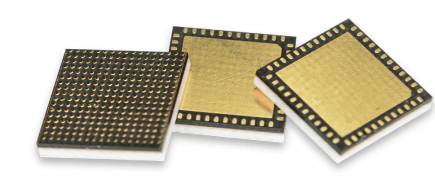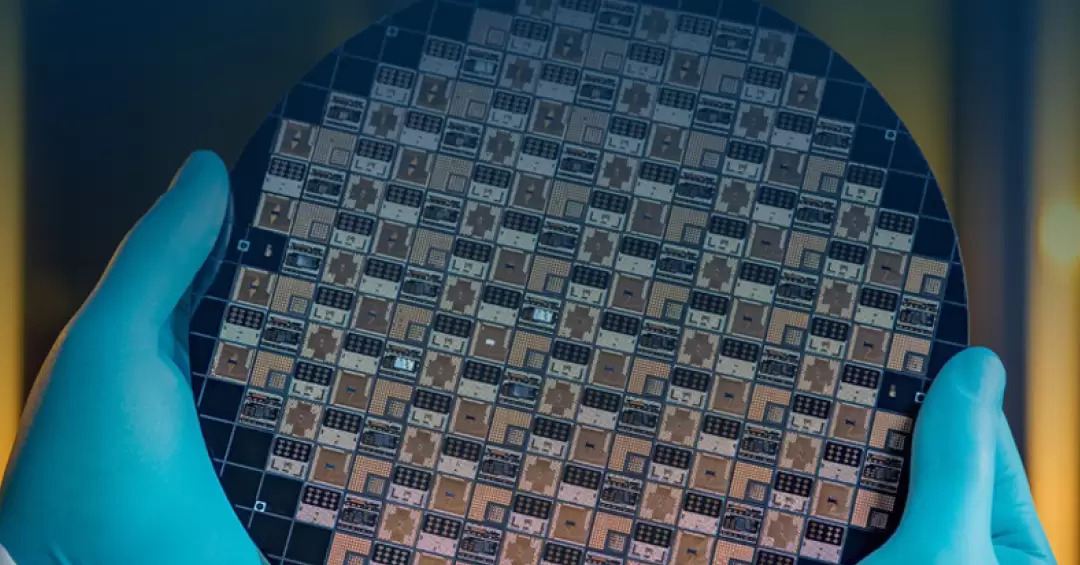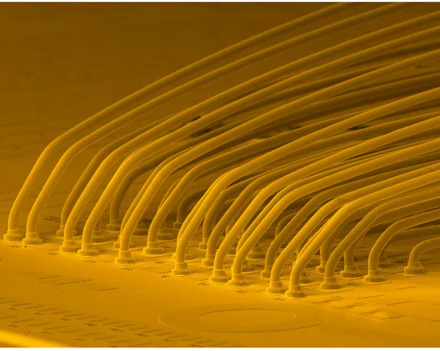IC Packaging Capabilities

We provide IC packages in a complex array of shapes, sizes, and materials, giving you the ability to select the exact features and functionality best suited to your specific application. This determination however is dependent upon a number of factors, including: Pitch, Dimensions, Lead Count, Thermal Requirements and Costing.
QFN (Quad Flat No Lead), represents a specific IC Packaging solution. iNPACK offers a customized panel-level solution featuring a plastic-encapsulated laminate panel, with a variety of dielectric and CTE options for electrical interconnection with the PCB. This type of packaging can be offered as a full turn-key solution, (including assembly and testing), or as a stand-alone substrate, combined with cavity lid.
Process & Machinery
SMT P&P
Curing (Flux-less Vacuum Soldering)
Laser Marketing / Labeling / Print
Reflow
Wedge & Ball
Dicing (Package Sawing)
XRAY
Plasma
Cross Section
Die Attach (soldering and adhesive)
Molding (Encapsulation)
QFN Package
Sintering
Through Mold Interconnection
Dispensing & Stamping
Laser Jet Ball (for BGA)
Laminate QFN Package Types

Dimensions
Pitch
Leads number
Leads number
Lid style
customized
customized
organic/ceramic/glass/metal/molded
General Features
Low profile: 0.9mm for QFN (molded)
Double-staggered lead configuration is an option
Enhanced thermal and electrical performance options available
Cost-effective panel production
ENEPIG and ENIG surface finishes
3x3 to 20x20mm body sizes
0.5 to 260 lead count available
Full in-house design capabilities
JEDEC standard outlines option
Near-hermetic sealing
3D CAD file upon request
Advantages
Material CTE Analysis
to verify that all materials used in the design of interconnections, substrates and thermal interfaces are certified to match the semiconductor properties.
Fanning Out the I/Os
from 2 or more dies to the substrate, which enables chips with improved performance and more I/Os.
Warpage Inspection
for substrate processes in micro assemblies and post SMT processes. Warpage poses a major risk on front and back-end processes, such as ball shooting, mounting, molding and interconnections.
Interconnect Options
are a critical part of packaging. We offer a wide variety of chip interconnect methodologies used in IC package design with an eye towards continuously improved technologies.
iNPACK Relevant content
See All Articles
articles
Die Stacking Technology Where Less is Moore in PCB Design & Manufacturing

articles
iNPACK™ Panel Level Solutions
PCB Technologies’ iNPACK Division offers complete package PCB assembly solutions for both low and high-volume requirements. This includes SiP-system in package design and manufacturing, surface mount tech, chip on board (COB), microfabrication, and substrate design and manufacturing capabilities.

articles